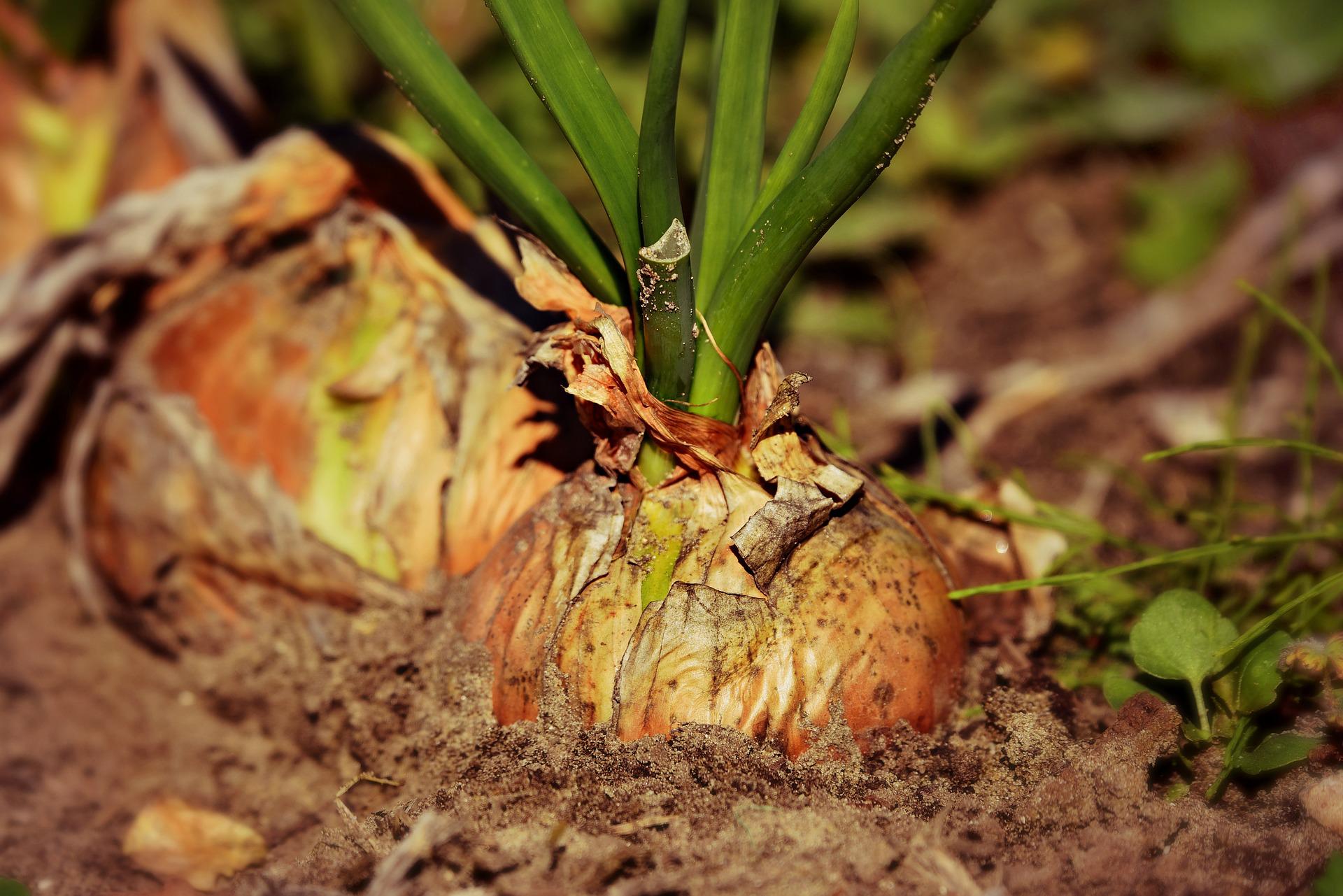The onion fly is the most dangerous pest affecting onions in our regions, typically appearing during wet springs. The most harmful is the first, spring generation, which attacks the still underdeveloped plants.
Onion Fly (Delia antiqua)
The onion fly is the most dangerous pest of onions in our regions, generally appearing during wet springs. The most harmful is the first, spring generation, which attacks the still underdeveloped plants. Damage is caused by the larvae, which feed on the contents of the stalk. At the damage sites, sooty mold fungi develop, causing the plants to rot.
In the field, an onion fly attack can be easily recognized: affected plants begin to wilt suddenly, the leaves turn yellow, and the central leaf dries out and can be easily pulled out of the stalk. If such a plant is cut lengthwise, multiple larvae of the onion fly can be found. In cases of severe infestation, up to 50 larvae can be present in one plant. However, even a single larva in a young onion stalk can cause rotting.
In our climate, the onion fly has 2 – 3 generations per year. It overwinters as a pupa in the soil. The flight begins in the second half of April and often extends into the first half of May. About ten days after the start of the flight, the female lays eggs between the leaves of the onion, at the neck of young seedlings, on the onion bulb itself, or on the soil near the onion, in groups of 5 – 12. Over several days, the female lays 50 – 100 eggs.
A week after laying, larvae emerge and immediately bore into the young onion stalks, where they feed intensively. As a result, the leaves turn yellow, wilt, and dry out. The damage is more severe in younger plants. After 15 – 20 days of intensive feeding, the larva exits the plant and pupates in the soil or even in the bulb.
The pupal stage lasts for two weeks, after which the adult fly of the second generation emerges. The larvae of this generation cause less damage as the onions are already well developed. The second generation of onion flies can cause greater damage to leeks.
If none of these methods are used, the onion fly larva will certainly bore into the leaves.
When using these protection methods, it’s essential to consider the withdrawal period.
Onion Leafminer (Liriomyza cepae)
This pest is monophagous, attacking only onions. Although it appears every year, significant damage occurs in years with abundant spring rainfall. The larvae of the first generation cause the most damage. This pest overwinters in the pupal stage, from which flies emerge in late April or early May. The female typically lays eggs at the base of the leaves. The larvae that emerge from the eggs bore into the leaves, creating tunnels as they consume the leaf tissue. Before pupating, the larva exits the leaf and pupates in the soil. This pest has 2 – 3 generations per year.
Onion Moth (Acrolepiopsis assectella)
The onion moth is not a common pest, but when it appears, it can cause significant damage, especially to seed onions. The adult moth (rarely the pupa) overwinters. The overwintered moths mate in May, after which they lay eggs. The larvae that emerge feed on the leaf tissue, causing damage. The larvae feed for 14 days before pupating. There are 2 generations per year in continental Croatia, while a third generation may develop in warmer regions, although only the first generation causes significant problems.
Weed Control in Onions
Weeds pose a problem in onion cultivation, especially with direct seeding, as weeds germinate faster than onions and, if not controlled, can prevent onion growth by outcompeting them.
On larger cultivation areas, the application of herbicides is an essential part of managing onion crops.
Only a few herbicides are registered for use in onions, so it is important to consult with herbicide manufacturers or distributors to avoid destroying the onion crop by using incorrect products or improper application of recommended ones.













































